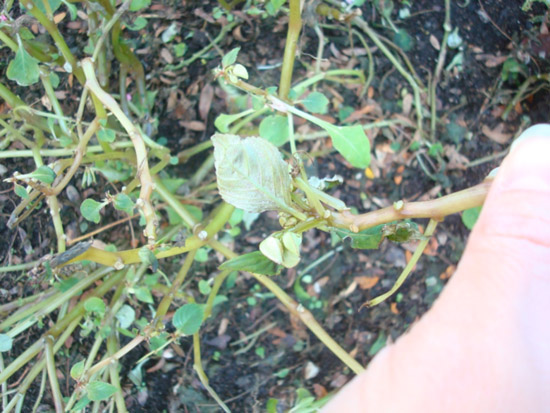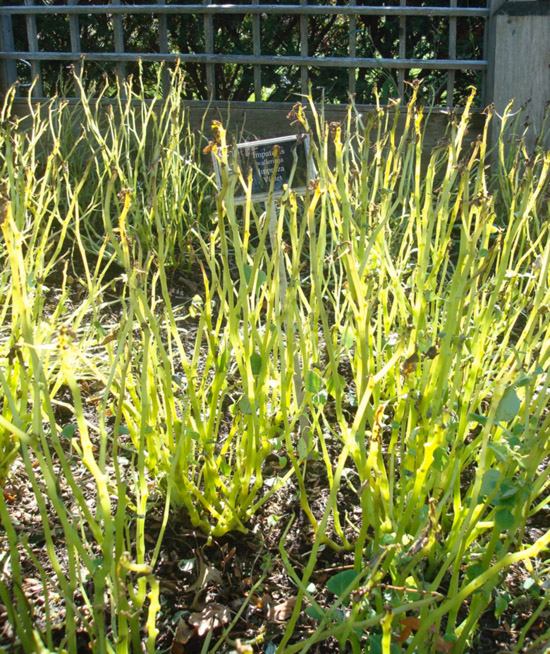Issue 2, May 6, 2013
Impatiens Downy Mildew
Impatiens Downy Mildew (IDM) continues to threaten one of the most popular shade-tolerant bedding plants in American landscapes. This disease is caused by a fungal-like pathogen, Plasmopara obducens, and only infects garden impatiens (Impatiens walleriana). New Guinea Impatiens (Impatiens 'New Guinea') and related hybrids have a high resistance to the disease. This pathogen is a major threat because it is aggressive and has the ability overwinter in the soils of areas previously infected by the disease. The ability to overwinter in the landscape, allows for severe outbreaks and infections to occur, even when growers provide clean disease free plants.
Scouting and early detection is critical with this disease. Look for the following symptoms:
- Initial symptoms are subtle and start as light-green yellowing or stippling of leaves.
- Infected leaves may curl downward.
- A white downy-like growth may be visible on the undersides of infected leaves.
- Infected leaves eventually drop leaving a bare stem.
- Under cool wet conditions, infected stems may collapse.


If you suspect that your impatiens may be infected with IDM, it is important that you remove and destroy infected plants as soon as possible. Bag the infected material, including any fallen leaves or blossoms, as well as any of the nearby Impatiens (they may be infected too), and remove from the site. Composting the diseased material is not recommended. The pathogen produces structures capable of overwintering in the Midwest. Composting may not completely destroy the pathogen. Avoid replanting a previously infected location with susceptible impatiens.
If you have struggled with this disease in years past, consider planting other shade tolerant species. Michigan State recently published a fact sheet titled, Alternatives to Impatiens. If planting impatiens this year, choose open areas. Keep a careful watch on impatiens to catch this disease in the early stages and remove infected plants immediately! Fungicides can provide some protection when applied preventatively on an appropriate schedule with a rotation of active ingredients. However, homeowners have fewer fungicide options when compared to commercial applicators and may not be able to protect impatiens for the entire season. Therefore, we do not recommend that homeowners rely on fungicides for control of IDM. (Stephanie Porter and Travis Cleveland)
Authors:
Stephanie Porter
Travis Cleveland